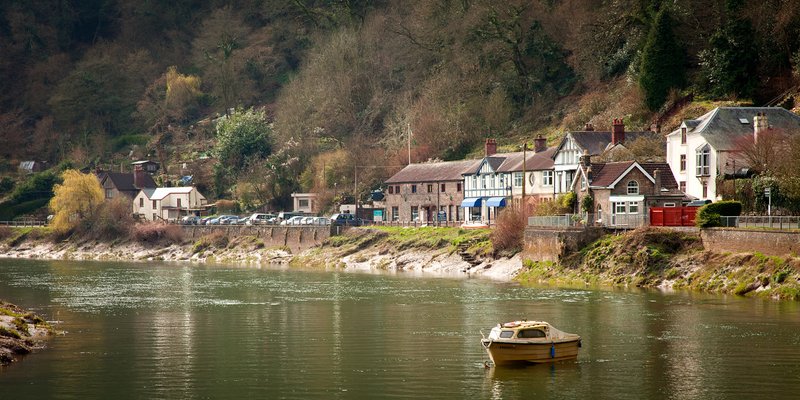The fascinating history of Tintern village spans thousands of years, offering visitors a journey through time in one of Wales' most picturesque locations. From ancient settlers to medieval monks, industrial pioneers to Victorian tourists, each era has contributed to the rich tapestry that makes Tintern so captivating today.

Whether you're planning a countryside escape, researching Welsh heritage, or simply curious about this remarkable village, understanding Tintern's story enhances any visit to the area. The history of Tintern isn't just about ruins and relics, it's about how a small settlement adapted and evolved while maintaining its unique character through centuries of change.
For those wondering about Tintern's origins and development, the village's story begins far earlier than its famous abbey, with evidence of human activity dating back to prehistoric times.
Early history
The land surrounding what we now know as Tintern first attracted human settlement during the Bronze Age (approximately 2500-800 BCE), drawn to the sheltered Wye Valley with its abundant natural resources.
Roman occupation brought further development to the region between 43-410 CE, with archaeological evidence suggesting mining activities in the surrounding hills. The name 'Tintern' likely has Celtic origins, possibly derived from Welsh words describing either a farm belonging to someone named Dinerton or a fort on the Derin stream - evidence that the site held significance long before its monastic fame.
Following Roman withdrawal, the area became part of the Welsh kingdom of Gwent, setting the stage for one of the most intriguing chapters in Tintern's early history.
King Tewdrig
The 6th century brought a remarkable figure to Tintern's history—King Tewdrig, whose story blends historical fact with legend. Around 577 CE, Tewdrig, having abdicated his throne as ruler of Gwent to live as a hermit near Tintern, emerged from seclusion when Saxon invaders threatened his former kingdom.
Mortally wounded in battle, Tewdrig was brought to a location near the future site of Tintern Abbey, where a miraculous spring emerged (now called St. Tewdric's Well). This sacred spot became an early Christian pilgrimage site, establishing Tintern's spiritual significance centuries before the abbey's construction.
St. Tewdric's Church in nearby Mathern is believed to mark his final resting place, connecting Tintern to the earliest days of Christianity in Wales.
Tintern Abbey
The defining moment in Tintern's history came in 1131 when Walter de Clare, Lord of Chepstow, founded a Cistercian monastery on the banks of the River Wye - the first Cistercian establishment in Wales and only the second in Britain.
By the 13th century, Tintern Abbey had grown into one of Wales' wealthiest monastic houses. The monks transformed the surrounding landscape, creating fish ponds, agricultural systems, and managed woodlands that shaped not just the spiritual life of the area but its physical environment and economy.
This golden age lasted until 1536, when Henry VIII's Dissolution of the Monasteries brought monastic life at Tintern to an abrupt end.
Blast furnace and metal works
Following the abbey's dissolution, Tintern underwent a transformation from religious centre to industrial hub. By 1568, brass production was underway in Tintern. By 1577-78, the first blast furnace was operating in the village, marking the beginning of an industrial era in the UK that would sustain Tintern for centuries.
The Company of Mineral and Battery Works established wireworks that became famous for producing the highest quality wire in Britain. The Abbey Tintern Furnace, built in 1668-69, became a centrepiece of local industry. Its restored remains can still be visited today.
This industrial heritage remains visible in local place names like Abbey Forge, Wire Works Valley, and Forge Cottage, with many workers' cottages from this period still standing.
Tourism and modern Tintern
As industrial activity declined in the early 19th century, Tintern began its transition to the tourism destination we know today, inspired by the Romantic movement's appreciation for picturesque ruins.
William Wordsworth's famous poem Lines Composed a Few Miles above Tintern Abbey and William Gilpin's Observations on the River Wye introduced the area to a wider audience. Tintern quickly became an essential stop on the fashionable "Wye Tour" for well-to-do travelers.
The opening of the Wye Valley Railway in 1876 made Tintern accessible to day-trippers, with the village adapting to this new economy with hotels (including The Royal George, established as a hotel in 1829), tearooms, and shops.
After the railway closed in 1959, automobile tourism ensured Tintern's continued popularity. In 1971, the area was designated part of the Wye Valley Area of Outstanding Natural Beauty, protecting its natural splendor for future generations.
Today's Tintern balances tourism with community life. The abbey receives over 70,000 visitors annually, while local businesses, including our own Royal George, continue the tradition of hospitality that has defined Tintern for over two centuries.
Summary
Few places offer such a complete timeline of human activity as the history of Tintern village - each chapter has left its mark on this extraordinary place.
Whether you're drawn by the architecture, the natural beauty, or the sense of stepping back in time, exploring the history of Tintern creates a deeper connection to this remarkable Welsh village.
Book your stay at The Royal George to experience Tintern's heritage firsthand, or learn everything about our historic hotel that has welcomed guests since 1829.


